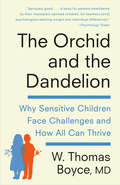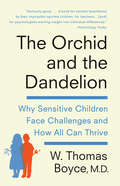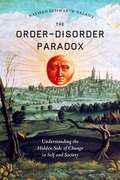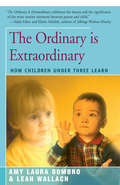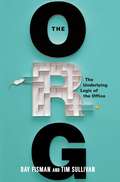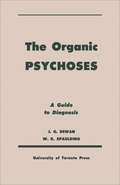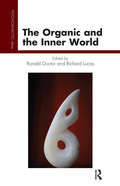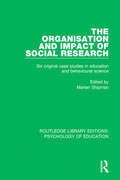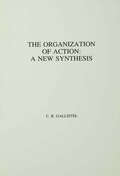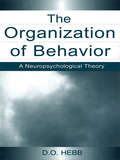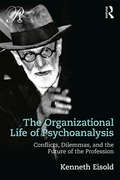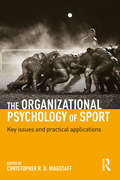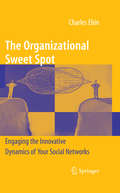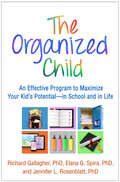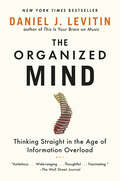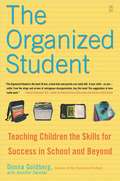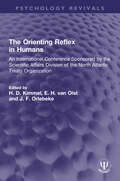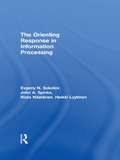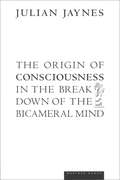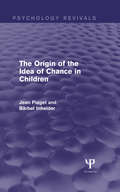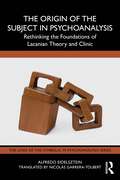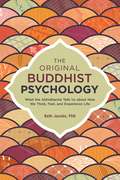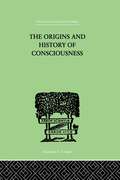- Table View
- List View
The Orchid and the Dandelion: Why Some Children Struggle and How All Can Thrive
by W. Thomas BoyceFrom one of the world's foremost researchers and pioneers of pediatric health--a book that offers hope and a pathway to success for parents, teachers, psychologists, psychiatrists, and child development experts coping with "difficult" children, fully exploring the author's revolutionary discovery about childhood development, parenting, and the key to helping all children find happiness and success."Based on groundbreaking research that has the power to change the lives of countless children--and the adults who love them."--Susan Cain, author of Quiet: The Power of Introverts. In Tom Boyce's extraordinary new book, he explores the "dandelion" child (hardy, resilient, healthy), able to survive and flourish under most circumstances, and the "orchid" child (sensitive, susceptible, fragile), who, given the right support, can thrive as much as, if not more than, other children. Boyce writes of his pathfinding research as a developmental pediatrician working with troubled children in child-development research for almost four decades, and explores his major discovery that reveals how genetic make-up and environment shape behavior. He writes that certain variant genes can increase a person's susceptibility to depression, anxiety, attention deficit hyperactivity disorder, and antisocial, sociopathic, or violent behaviors. But rather than seeing this "risk" gene as a liability, Boyce, through his daring research, has recast the way we think of human frailty, and has shown that while these "bad" genes can create problems, they can also, in the right setting and the right environment, result in producing children who not only do better than before but far exceed their peers. Orchid children, Boyce makes clear, are not failed dandelions; they are a different category of child, with special sensitivities and strengths, and need to be nurtured and taught in special ways. And in The Orchid and the Dandelion, Boyce shows us how to understand these children for their unique sensibilities, their considerable challenges, their remarkable gifts.
The Orchid and the Dandelion: Why Some Children Struggle and How All Can Thrive
by W. Thomas BoyceFrom one of the world's foremost researchers and pioneers of pediatric health--a book that offers hope and a pathway to success for parents, teachers, psychologists, pyschiatrists, and child development experts coping with "difficult" children. A book that fully explores the author's revolutionary discovery about childhood development, parenting, and the key to helping all children find happiness and success.In The Orchid and the Dandelion, Dr. W. Thomas Boyce writes of the "dandelion" child (hardy, resilient, healthy), able to survive and flourish under most circumstances, and the "orchid" child (sensitive, susceptible, fragile), who, given the right support, can thrive as much as, if not more than, other children. For the past four decades Boyce has been working with troubled children. The Orchid and the Dandelion offers help to those who have lost their confidence in the promise of a child gone seriously adrift--into drug abuse, delinquency, depression, or destructive friendships, the dark territory of psychological trouble, school failure, or criminality.Boyce's breakthrough research reveals how genetic makeup and environment shape behavior. Rather than seeing this "risk" gene as a liability, through his daring research, Boyce has recast the way we think of human frailty and shows that while variant genes can create problems (susceptibility to depression, anxiety, attention deficit hyperactivity disorder, and antisocial, sociopathic, or violent behaviors), they can also, in the right setting and with the right nurturing, produce children who not only do better than before but far exceed their peers. He describes what it is to be an "orchid" child, to live a life far more intense, painful, vivid, and variable than that of a dandelion. For orchid children, the world is often a frightening and overwhelming place. He makes clear that orchids are not failed dandelions and shows people how to embrace the unique gifts, abilities, and strengths of orchid children and how to create and environment at home and work that will allow them to flourish.Boyce writes, as well, of dandelions: how vital they are to what George Eliot describes as "the growing good of the world," even in the midst of their own struggles and life challenges. He writes of his own family, particularly of his sister, the inspiration for his work, an orchid child overcome by the family's tragedies and sadnesses to which the author, as a dandelion child, was impervious.And we come to understand that beneath the servicable categories of "orchid" and "dandelion" lies the truer reality of a continuum, a spectrum of sensitivities to the world, along which we all have a place.
The Order-Disorder Paradox: Understanding the Hidden Side of Change in Self and Society
by Nathan Schwartz-SalantIncreasing order in a system also creates disorder: this seemingly paradoxical idea has deep roots in early cultures throughout the world, but it has been largely lost in our modern lives as we push for increasing systematization in our world and in our personal lives. Drawing on nearly five decades of research as well as forty-five years working as a psychoanalyst, Nathan Schwartz-Salant explains that, in a world where vast amounts of order are being created through the growing success of science and technology, the concomitant disorder is having devastating effects upon relationships, society, and the environment. As a Jungian analyst with training in the physical sciences, Schwartz-Salant is uniquely qualified to explore scientific conceptions of energy, information, and entropy alongside their mythical antecedents. He analyzes the possible effects of created disorder, including its negative consequences for the creator of the preceding order as well as its potentially transformative functions. With many examples of the interaction of order and disorder in everyday life and psychotherapy, The Order-Disorder Paradox makes new inroads into our understanding of the wide-ranging consequences of the order we create and its effects on others and the environment.
The Ordinary is Extraordinary: How Children Under Three Learn
by Amy Laura Dombro Leah WallachToday's parents feel pressured to spend "quality time" preparing their child for success in school and life. This landmark book shows parents how and why everyday moments they share with their child, for instance preparing and eating dinner, giving the child a bath, and changing a child's diaper, are the most valuable educational activities of all.
The Org: The Underlying Logic of the Office
by Tim Sullivan Ray FismanIn THE ORG, Ray Fisman and Tim Sullivan explain the tradeoffs that every organization faces, arguing that this everyday dysfunction is actually inherent to the very nature of orgs. THE ORG diagnoses the root causes of that malfunction, beginning with the economic logic of why organizations exist in the first place, then working its way up through the org's structure from the lowly cubicle to the CEO's office.Woven throughout with fascinating case studies-including McDonald's, al Qaeda, the Baltimore City Police Department, Procter and Gamble, the island nation of Samoa, and Google-THE ORG reveals why the give-and-take nature of organizations, while infuriating, nonetheless provides the best way to get the job done.You'll learn:The purpose of meetings and why they will never go awayWhy even members of al Qaeda are required to submit Travel & Expense reportsWhat managers are good forHow the army and other orgs balance marching in lockstep with fostering innovationWhy it's the hospital administration-not the heart surgeon-who is more likely to save your lifeThat CEOs often spend over 80% of their time in meetings-and why that's exactly where they should be (and why they get paid so much)Looking at life behind the red tape, THE ORG shows why the path from workshop to corporate behemoth is pockmarked with tradeoffs and competing incentives, but above all, demonstrates why organizations are central to human achievement.
The Organic Psychoses: A Guide to Diagnosis
by John Dewan William SpauldingPsychoses due to physical disturbances involving the brain are common and can complicate a bewildering variety of illnesses. Patients with such disorders may be encountered in general practice, emergency wards, medical services, on the surgical ward, post-operatively as well as in psychiatric clinics and of course in mental hospitals. A specialist in psychiatry and a specialist in internal medicine have collaborated to fill an important gap in medical literature of practical value to the physician. Throughout the book the needs of doctors who are responsible for such patients has been kept in mind. In this well-organized, concise monograph the organic psychoses are classified in a comprehensive manner which can be easily applied to clinical cases. The chief diagnostic features of the various organic syndromes have been presented, together with full references to the clinical literature. The diagnostic approach to the various clinical problems has been considered and illustrated by a group of case histories. As teachers, the authors have become aware of the need for a clarification of this complicated area of medicine in order that the practitioner, postgraduate physician, interne, and undergraduate student may have a ready guide to aid him in the diagnosis of these complicated disorders. Many doctors in a number of branches of medical practice will find this a handy, useful book to own.
The Organic and the Inner World (The\psychoanalytic Ideas Ser.)
by Richard Lucas Ronald DoctorThis book considers the place for analytic thinking in the world of psychiatry with its emphasis on an organic approach to major psychiatric disorders. It is the result of a conference that was held at the Institute of Psychoanalysis entitled 'The Organic and the Inner World'.
The Organisation and Impact of Social Research: Six Original Case Studies in Education and Behavioural Sciences (Routledge Library Editions: Psychology of Education)
by Marten ShipmanOriginally published in 1976, the authors of six of the most widely quoted works in behavioural science related to education, at the time, here describe in detail their research work, including its origins, planning and implementation. The accounts are unusual, not only for their technical detail but for their candour. The brief was to put the heart and brains back into accounts of research so the authors comment not only on the research design, but on the personal and professional problems they had to overcome. They also reflect on the reception of their work, and the way in which it has been adapted, misunderstood or deliberately distorted to support arguments of widely differing ideological pressure groups. The book shows how ingenuity and persistence as well as technical competence lie at the heart of the research process. The authors do not give the normal depersonalised, streamlined account which gives a false, mechanical picture of research as an occupation, but show it to be a profound personal and professional experience as they comment on the thought that lay behind their work and the way it was finally produced for publication. Dr Shipman has written a short introduction to each chapter, and contributed a concluding chapter relating the six research experiences to conventional views on the research process and to the part played by research evidence in policy making.
The Organization of Action: A New Synthesis
by C.R. GallistelA synthesis of classic and modern neurobehavioral literature dealing with the principles by which complex, purposive, and intelligent behavior is generated, this book features: * papers by C.S. Sherrington, E. von Holst, D.M. Wilson, G. Fraenkel, H. Mittelstaedt, and P. Weiss * clear descriptions of three types of elementary units of behavior -- the reflex, the oscillator, and the servomechanism * a review of the diverse manifestations of hierarchical structure in the neural mechanisms underlying coordinated action. This volume has proven to be of great value to psychologists, neurobiologists, and philosophers interested in the problem of action and how it may be approached in light of modern neurobehavioral research. It has been designed for use as a supplemental text in courses in physiological psychology, neurobiology and behavior, and those courses in cognitive and developmental psychology that place particular emphasis on understanding how complex behavior patterns are implemented.
The Organization of Behavior: A Neuropsychological Theory
by D.O. HebbSince its publication in 1949, D.O. Hebb's, The Organization of Behavior has been one of the most influential books in the fields of psychology and neuroscience. However, the original edition has been unavailable since 1966, ensuring that Hebb's comment that a classic normally means "cited but not read" is true in his case. This new edition rectifies a long-standing problem for behavioral neuroscientists--the inability to obtain one of the most cited publications in the field. The Organization of Behavior played a significant part in stimulating the investigation of the neural foundations of behavior and continues to be inspiring because it provides a general framework for relating behavior to synaptic organization through the dynamics of neural networks. D.O. Hebb was also the first to examine the mechanisms by which environment and experience can influence brain structure and function, and his ideas formed the basis for work on enriched environments as stimulants for behavioral development. References to Hebb, the Hebbian cell assembly, the Hebb synapse, and the Hebb rule increase each year. These forceful ideas of 1949 are now applied in engineering, robotics, and computer science, as well as neurophysiology, neuroscience, and psychology--a tribute to Hebb's foresight in developing a foundational neuropsychological theory of the organization of behavior.
The Organizational Life of Psychoanalysis: Conflicts, Dilemmas, and the Future of the Profession
by Kenneth EisoldThe Organizational Life of Psychoanalysis is a wide-ranging exploration and examination of the organizational conflicts and dilemmas that have troubled psychoanalysis since its inception. Kenneth Eisold provides a unique, detailed, and closely reasoned account of the systems needed to carry out the tasks of training, quality control, community building, and relationships with the larger professional community. He explores how the freedom to innovate and explore can be sustained in a context where the culture has insisted on certain standards being set and enforced, standards that have little to do with providing effective pathways to cure.? Each chapter in this collection addresses a specific dilemma faced by the profession, including: Who is to be in charge of training and who will determine those who succeed the existing leadership?? Which theories and practices are to be approved and which proscribed and censored?? How is the competition with alternative methods, including psychotherapy informed by psychoanalysis, to be managed?? Several chapters are devoted to exploring the reciprocal influence of Freudian psychoanalysis and Jungian Analytical Psychology. Others explore the specific dilemmas and difficulties affecting the field currently, stemming from the massive restructuring of the health care industry and the changes affecting all professions, as they are reshaped into massive organizations no longer marked by personal relationships and individual control. The Organizational Life of Psychoanalysis will be essential reading for psychoanalysts, psychoanalytic psychotherapists, and anyone interested in the future of psychoanalysis as a profession. It will appeal greatly to anyone who has assumed full or partial responsibility for the management of a psychoanalytic institute or association.
The Organizational Psychology of Sport: Key Issues and Practical Applications
by Christopher R. D. WagstaffThis ground-breaking book is the first to provide a comprehensive overview of how organizational psychology can be used to understand and improve performance in elite sport. Using recent theoretical advances from this burgeoning area of research, each chapter offers key conceptual issues and practical insights across a range of topics. The book is structured into four constituent parts, Attitudes and emotions in sports organizations Stress and well-being in sports organizations Behaviors in sports organizations Environments in sports organizations Covering key areas such as attitudes to employment, conflict and change management, leadership, and relationships with the mass media, the book shines a spotlight on how organizational issues play a fundamental role in the experience of individuals and teams. In an era of ever-increasing professionalism in sport, the book provides an invaluable new perspective on performance at the elite level. Including contributions from an international range of academics and practitioners, it will be essential reading for any student or practitioners within sport and exercise psychology.
The Organizational Sweet Spot
by Charles EhinEmployee disengagement is one of the most pressing problems plaguing managers today hampering the innovation capacities of countless organizations. According to recent polls, some 20 percent of workers report feeling disconnected from their jobs, in an environment of stagnating wages, massive layoffs, rising health care costs, and other factors that contribute to alienation, distrust, and apathy. In The Organizational Sweet Spot, Dr. Charles Ehin takes a refreshing new look at what it will take to reengage disaffected workers and boost their resolve to advance novel ideas. Applying the latest research from such fields as evolutionary psychology, social neuroscience, organizational behavior, anthropology, and social network analysis, Ehin demonstrates how employee disengagement is rooted in a fundamental misalignment between people's instinctive drive to develop their personal and group identities through informal or "emergent" relationships and the ways in which organizational goals and profit motives are executed through formal bureaucracy. The challenge for today's organizations--which operate under constantly changing conditions--is to narrow this gap, that is, to find the "sweet spot", where the formal and informal elements of the organization overlap. Ehin provides practical tools for leaders to support this "shared access domain" to improve productivity, catalyze innovation, and inspire exceptional performance. His new model is likely to reverberate throughout current management thinking as we move toward creating more vital and meaningful workplaces.
The Organized Child: An Effective Program to Maximize Your Kid's Potential--in School and in Life
by Richard Gallagher Elana G. Spira Jennifer L. RosenblattAre you sick of nagging your child to write down homework assignments? Is his or her backpack a black hole that eats up papers, books, and gym clothes? Organizational skills problems aren't just frustrating--they get in the way of school success and wreak havoc at home. Fortunately, help is at hand. This unique resource stands out from other books because it is based on a scientifically tested program that works. Learn how you can teach your 7- to 13-year-old specific skills to: *Organize school materials and toys. *Track assignments. *Improve time management and planning. *Overcome brain "Glitches"--mischievous creatures that trip kids up. *Create and follow effective routines. Concrete examples, tips for strategically using praise and rewards, and practical tools (you can download and print additional copies as needed) help you implement each step of the program. Maximizing your kid's potential starts now--here's how. Mental health professionals, see also the related intervention manual from Gallagher et al., Organizational Skills Training for Children with ADHD: An Empirically Supported Treatment.
The Organized Mind: Thinking Straight in the Age of Information Overload
by Daniel J. LevitinNew York Times bestselling author and neuroscientist Daniel J. Levitin shifts his keen insights from your brain on music to your brain in a sea of details.The information age is drowning us with an unprecedented deluge of data. At the same time, we’re expected to make more—and faster—decisions about our lives than ever before. No wonder, then, that the average American reports frequently losing car keys or reading glasses, missing appointments, and feeling worn out by the effort required just to keep up.But somehow some people become quite accomplished at managing information flow. In The Organized Mind, Daniel J. Levitin, PhD, uses the latest brain science to demonstrate how those people excel—and how readers can use their methods to regain a sense of mastery over the way they organize their homes, workplaces, and time.With lively, entertaining chapters on everything from the kitchen junk drawer to health care to executive office workflow, Levitin reveals how new research into the cognitive neuroscience of attention and memory can be applied to the challenges of our daily lives. This Is Your Brain on Music showed how to better play and appreciate music through an understanding of how the brain works. The Organized Mind shows how to navigate the churning flood of information in the twenty-first century with the same neuroscientific perspective.
The Organized Student: Teaching Children the Skills for Success in School and Beyond
by Donna Goldberg Jennifer ZwiebelDonna Goldberg founded the Organized Student, a consulting firm based in New York City, in 1990. Jennifer Zwiebel joined the Organized Student in 2002. Both authors live in New York City. Life is painful for students who don't meet the expectations of their parents, teachers, and peers. Some kids suffer from learning issues and others from disorganization. Whatever the obstacle, its effects are devastating to a child's self-esteem. The root of the problem had nothing to do with the students' intelligence or motivation to do well in school; it had to do with their lack of basic organizational skills. It's important to keep in mind that school today is not the place it was when you were growing up. Students have substantially more work, their days are more fragmented, and there's a pervasive sense of pressure leading students to feel that they can't afford to make mistakes. Advances in technology, overloaded schedules, and changes in family structure mean students are facing a different and often overwhelming world. If you and your child invest the time it takes to organize sup¬plies, homework, and a study schedule, you can create the structure that he needs to succeed. While this book offers many different strategies and systems for getting organized, they will work only if you communicate openly with your child without being critical. Everyone learns differently and each student will come up with his own "right answers." It's vital that you recognize the importance of maintaining a non-judgmental attitude and that you address each situation with an open mind, a positive approach, and no eye rolling. The fastest way to end an organizing session with your child is to criticize him. Keep your eye on the long-term goal and don't get distracted by a failed test or a notebook full of doodles. When you learn to stay focused and listen for the problems, you will discover that a solution can always be worked out.
The Orienting Reflex in Humans: An International Conference Sponsored by the Scientific Affairs Division of the North Atlantic Treaty Organization (Psychology Revivals)
by H. D. Rimmel; E. H. van Olst; J. F. OrlebekeOriginally published in 1979, the world’s leading researchers contributed chapters describing their work on the orienting reflex in humans. The contributions, at the time current and comprehensive, in a sense that each facet of contemporary research was represented, address the orienting reflex, now recognized as a fundamental component of human learning and cognitive function. The authors contributing to this volume emphasize both theoretical and methodological issues, as well as present more empirical research. Here is a volume that spans all current work on the orienting reflex in humans, both basic and applied, from the laboratory as well as clinical data, and which would be of immense interest to psychologists, psychophysiologists, psychiatrists, physiologists, and all others interested in this fascinating topic.
The Orienting Response in Information Processing
by Heikki Lyytinen Risto Naatanen Evgeni N. Sokolov John SpinksThis book is a testimony to Evgeny Nikolaevich Sokolov's years of work in developing knowledge in the areas of perception, information processing and attention, and to the research it has spawned. It presents a historical account of a research program, leading the reader toward a cognitive science approach to the study of perception and attention. An understanding of neuroscience and mathematical modeling are helpful prerequisites. The co-authors collected data on orienting, attention, and information processing in the brain using single-cell recordings, central, autonomic, cognitive, behavioral, and verbal measures. This commonality brought them together for a series of meetings which resulted in the production of this book. The book ends with a review of some of the co-authors studies that have developed from or in parallel with Sokolov's research. They investigate, in particular, the concepts of attention and anticipation using a psychophysiological methodology.
The Origin of Consciousness in the Breakdown of the Bicameral Mind (Pelican Ser.)
by Julian JaynesNational Book Award Finalist: &“This man&’s ideas may be the most influential, not to say controversial, of the second half of the twentieth century.&”—Columbus Dispatch At the heart of this classic, seminal book is Julian Jaynes's still-controversial thesis that human consciousness did not begin far back in animal evolution but instead is a learned process that came about only three thousand years ago and is still developing. The implications of this revolutionary scientific paradigm extend into virtually every aspect of our psychology, our history and culture, our religion—and indeed our future. &“Don&’t be put off by the academic title of Julian Jaynes&’s The Origin of Consciousness in the Breakdown of the Bicameral Mind. Its prose is always lucid and often lyrical…he unfolds his case with the utmost intellectual rigor.&”—The New York Times &“When Julian Jaynes . . . speculates that until late in the twentieth millennium BC men had no consciousness but were automatically obeying the voices of the gods, we are astounded but compelled to follow this remarkable thesis.&”—John Updike, The New Yorker &“He is as startling as Freud was in The Interpretation of Dreams, and Jaynes is equally as adept at forcing a new view of known human behavior.&”—American Journal of Psychiatry
The Origin of the Idea of Chance in Children (Psychology Revivals)
by Jean Piaget Barbel InhelderAlthough originally published in France in 1951 this English translation was not published until 1975. The book supplements the authors’ previous publications on the development of thought in the child and is the result of two preoccupations: how thought that is in the process of formation acts to assimilate those aspects of experience that cannot be assimilated deductively – for example, the randomly mixed; and the necessity of discovering how the mental processes work in the totality of spontaneous and experimental searchings that make up what is called the problem of ‘induction’. Induction is a sifting of our experiences to determine what depends on regularity, what on law, and what on chance. The authors examine the formation of the physical aspects of the notion of chance; they study groups of random subjects and of ‘special’ subjects; and they analyse the development of combining operations which contributes to determining the relationship between chance, probability, and the operating mechanisms of the mind.
The Origin of the Subject in Psychoanalysis: Rethinking the Foundations of Lacanian Theory and Clinic (The Lines of the Symbolic in Psychoanalysis Series)
by Alfredo EidelszteinThis highly original work uses the Big Bang theory as a conceptual tool to address the question of the origin of the subject in psychoanalysis.The Origin of the Subject in Psychoanalysis elucidates the radical discontinuity between Freud and Lacan in the foundations of their psychoanalytic theories and conceptions of the clinic. Alfredo Eidelsztein argues that just as physics conceives the origin of matter, energy and space-time as an absolute beginning, so the appearance of the symbolic order and the subject must be understood as an “ex-nihilo creation” that excludes any form of causal relationship between the “before” and the “after.” He argues that this is a major conceptual difference between Freud and Lacan: the dimension of the signifier, beginning with its appearance, marks an absolute discontinuity from what was before and asserts itself as the condition from which, for the human realm, reality and experience are given. Eidelsztein’s conceptions regarding the origin of the subject, the Big Bang of language and speech, and its discontinuity with the biological body establish the basis on which the psychoanalytic clinic should be sustained.Written in clear and straightforward prose, The Origin of the Subject in Psychoanalysis will be of great interest to scholars of Lacanian psychoanalysis and to Lacanian analysts in practice and in training.
The Original Buddhist Psychology: What the Abhidharma Tells Us About How We Think, Feel, and Experience Life
by Beth JacobsThe Abhidharma, one of the three major text collections of the original Buddhist canon, frames the psychological system of Buddhism, explaining the workings of reality and the nature of the human mind. It is composed of detailed matrixes and lists that outline the interaction of consciousness and reality, the essence of perception and experience, and the reasons and methods behind mindfulness and meditation. Because of its complexity, the Abhidharma has traditionally been reserved only for academic or monastic study; now, for the first time, clinical psychologist Beth Jacobs brings this dynamic body of work to general readers, using practical explanation, personal stories, and vivid examples to gently untangle the technical aspects of the Abhidharma. Drawing on decades of experience as both a therapist and a Buddhist, Jacobs illuminates this classic area of Buddhist thought, highlighting the ways it can broaden and deepen our experience of the human psyche and offering profound insights into spiritual practice.
The Origins And History Of Consciousness (Bollingen Ser. #Vol. 42)
by Neumann, ErichFirst Published in 1999. Routledge is an imprint of Taylor & Francis, an informa company.
The Origins Of Love And Hate (Key Texts In The Psychology Of Health And Illness)
by Suttie, Ian DFirst published in 1999. Routledge is an imprint of Taylor & Francis, an informa company.
